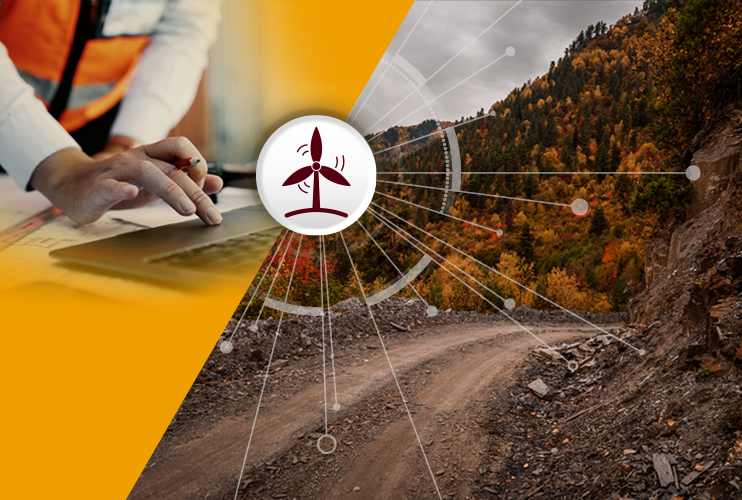Moving modern wind turbine components is never “routine.” Tower sections now top 100 meters, blades exceed 60 meters, and nacelles can weigh 100 tons or more. Factor in mountain passes, narrow ranch roads, and high-altitude weather, and transporting these giants becomes a strategic mission, not just a trucking job.
Here are five effective ideas for mastering turbine logistics in extreme terrain, keeping projects on schedule, on budget, and on the road.
-
1. Early Reconnaissance
Before a single blade is loaded, crews should conduct physical route surveys (not just satellite checks).
Walk the corridors with engineers, truck operators, and local DOT inspectors to measure bridge load limits and roadway widths, map out overhead clearance (powerlines, signage, tree canopies), and identify soft shoulders, culvert capacities, and roadside hazards (rock outcrops, drop-offs).
Ranchers, landowners, and county commissioners know conditions on the ground. Early outreach secures easements for temporary road widening, tree trimming, and staging areas—and prevents last-minute community pushback. This soft recon process has compounding benefits for any energy project.
-
2. Equipment and Permits: Matching Gear to Geography
Extendable blade trailers with hydraulic tilt and steerable trailers navigate hairpin turns on ridge-top roads. Similarly, self-propelled modular transporters (SPMTs) carry heavy nacelles across uneven terrain, distributing weight over dozens of wheels to avoid overloading rural bridge decks.
Heavy-haul trucks lose up to 10–15% of engine power for every 1,000 m of elevation gain, so consider a fer pertinent solutions:
- Spec’ing turbocharged diesel engines with altitude compensators.
- Scheduling load-light segments for drop-and-hook transfers in valley staging yards.
Lastly, be mindful of permitting around your transport.
Oversized loads require state and local permits, police escorts, and even utility notifications. Best practice is to bundle hauls into a “master permit” for a season, locking in fees and avoiding repetitive applications.
-
3. Weather Windows and Scheduling
The mountains can do unusual things to weather patterns, throwing microclimates into your transport plans. Colorado ridgelines can swing from clear skies to whiteout conditions in minutes. Real-time weather monitoring (road-specific forecasts) guides dispatch decisions.
When possible, schedule hauls between April and October, avoiding winter icing and spring runoff that can soften unpaved shoulders.
High-altitude driving is physically taxing. Rotate drivers more frequently, limit night drives, and build in contingency days for weather holds. Modern telematics can track hours-of-service in real time and flag potential violations before they happen.
-
4. Cost Controls and Risk Mitigation
When surveys reveal narrow stretches or substandard bridges, negotiate cost-share agreements with local road authorities. Upgrades paid from project contingency budgets can save weeks of detours later.
Mountain roads carry unique liability exposures—from rock slides to deck damage. Require all carriers to carry specialized heavy-haul policies and secure hold-harmless agreements with landowners for temporary easements.
-
5. The Competitive Edge: Logistics as a Differentiator
Developers who nail logistics early gain more than cost savings. (Plan your turbine project with the end in mind, we always say.) The diligent developers will earn:
- Faster Permits: Authorities reward proactive traffic-management and community engagement.
- ESG Points: Lower emissions from optimized routing and modern fleets.
- Capital Confidence: Investors see seasoned logistics plans as a sign of operational maturity and reduced risk.
Take Action:
- Launch a multi-disciplinary reconnaissance team before finalizing turbine layouts.
- Lock in specialized equipment and haul permits in your early-stage schedule.
- Integrate weather and fatigue-management software into your dispatch protocols.
- Treat logistics like a project P&L line item: forecast costs, track burn rates, and report status to your finance partners weekly.
Smart planning turns “impossible routes” into routine deliveries and could be the difference between a late-season ribbon cutting and a stranded turbine on the backroads.


